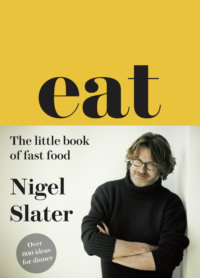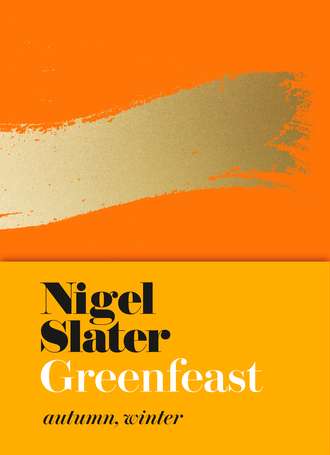
Полная версия
Greenfeast
Put the polenta on a large plate. Break the eggs into a shallow dish and mix the yolks and whites together lightly with a fork. If the artichokes are whole, then slice them in half. Roll each half in the beaten egg, then place in the polenta and turn over, pressing down firmly to coat evenly.
Heat the groundnut oil, add the artichokes and fry till golden and crisp. Lift each from the oil and drain briefly on kitchen paper before dividing between two plates. Serve with the crisp beans and the olive paste and, if you wish, a wedge of lemon.
• Make a black olive paste if you prefer, using stoned black olives. I would also be tempted to add a pinch of dried chilli flakes when you blend the ingredients.
• You can use breadcrumbs instead of polenta. Sieve fresh dry crumbs on to a plate and roll the artichokes in them after coating in egg.
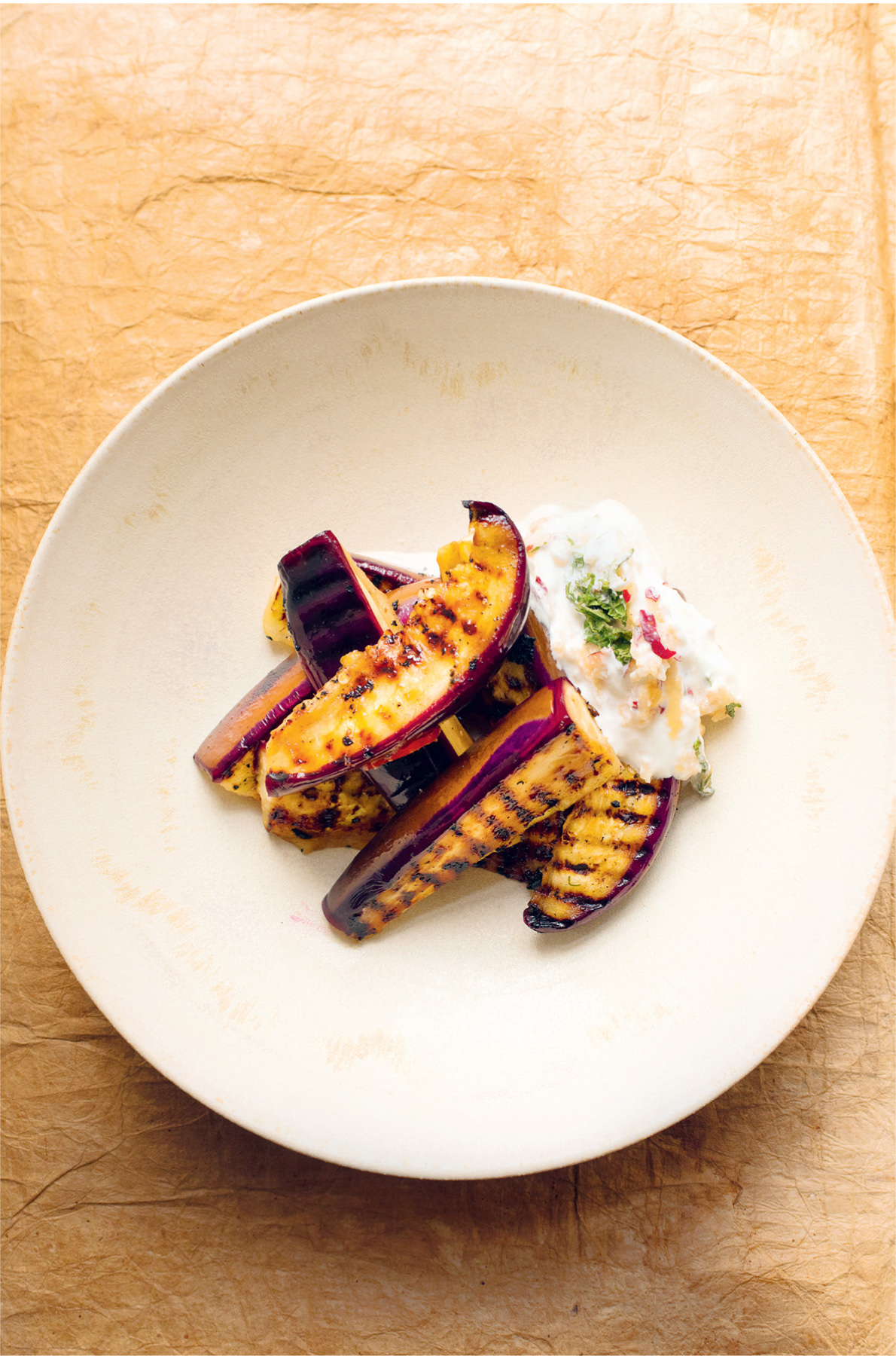
AUBERGINES, GINGER, TAMARIND
Hot, sweet, sour.
Serves 2
lime juice 100ml (about 2 limes)
ginger 30g
fish sauce 3 teaspoons
palm sugar 4 teaspoons
hot red chilli 1
hot green chilli 1
tamarind paste 4 teaspoons
groundnut oil 2 tablespoons
aubergines 300g
For the apple yoghurt:
mint leaves 12
a small apple
white wine vinegar 2 tablespoons
natural yoghurt 200ml
Put the lime juice into a mixing bowl. Peel and grate the ginger, stirring the resulting paste into the lime juice. Pour in the fish sauce, then stir in the palm sugar until dissolved.
Finely chop the red and green chillies, removing the seeds if you wish, then add them to the marinade with the tamarind paste and groundnut oil, combining the ingredients thoroughly.
Cut the aubergines in half lengthways, then into wedges as you might a melon. Now cut each wedge in half. Put the aubergines into the marinade, turn to coat and set aside for a good half hour. During this time they will soften a little.
Make the apple yoghurt: finely chop the mint leaves and put them in a small mixing bowl. Grate the apple into the bowl, it can be as coarse or as fine as you wish, then stir in the white wine vinegar and yoghurt, cover and set aside.
To cook the aubergines, heat a cast-iron griddle (and switch on the extractor). Place the aubergines on the griddle and leave to brown on the underside. Turn, loosening them from the griddle with a palette knife, and brown the other side. Keep the heat low to moderate, and make sure they are cooked right through – they must be fully tender.
Serve the aubergines, hot from the griddle, with the apple yoghurt sauce.
• Cut the aubergines in slices or wedges, as the fancy takes you. There will, I assure you, be much smoke, so switch on the extractor or open a window. Better still, cook them outside on the barbecue. Arm yourself with a palette knife to gently prise them from the bars of the griddle. I like to keep the heat no hotter than medium to give the aubergine time to cook through to the middle, a process you can speed up by covering the aubergines with an upturned metal bowl (or a lid, if your griddle has one). If you prefer, rather than the sour apple dressing, make a dressing of olive oil, lime juice and coriander leaves.
• A twist of noodles, tossed with the merest splash of sesame oil, could be a suitable accompaniment here, as would long-grain rice, steamed and seasoned with black pepper and sesame seeds.
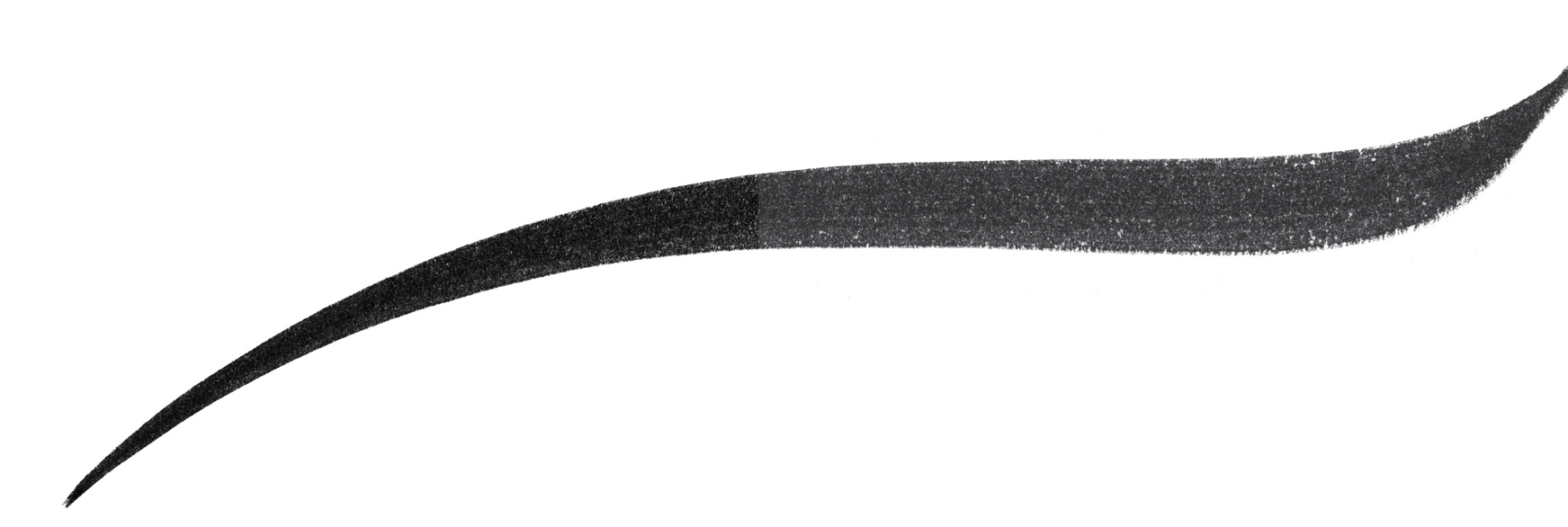
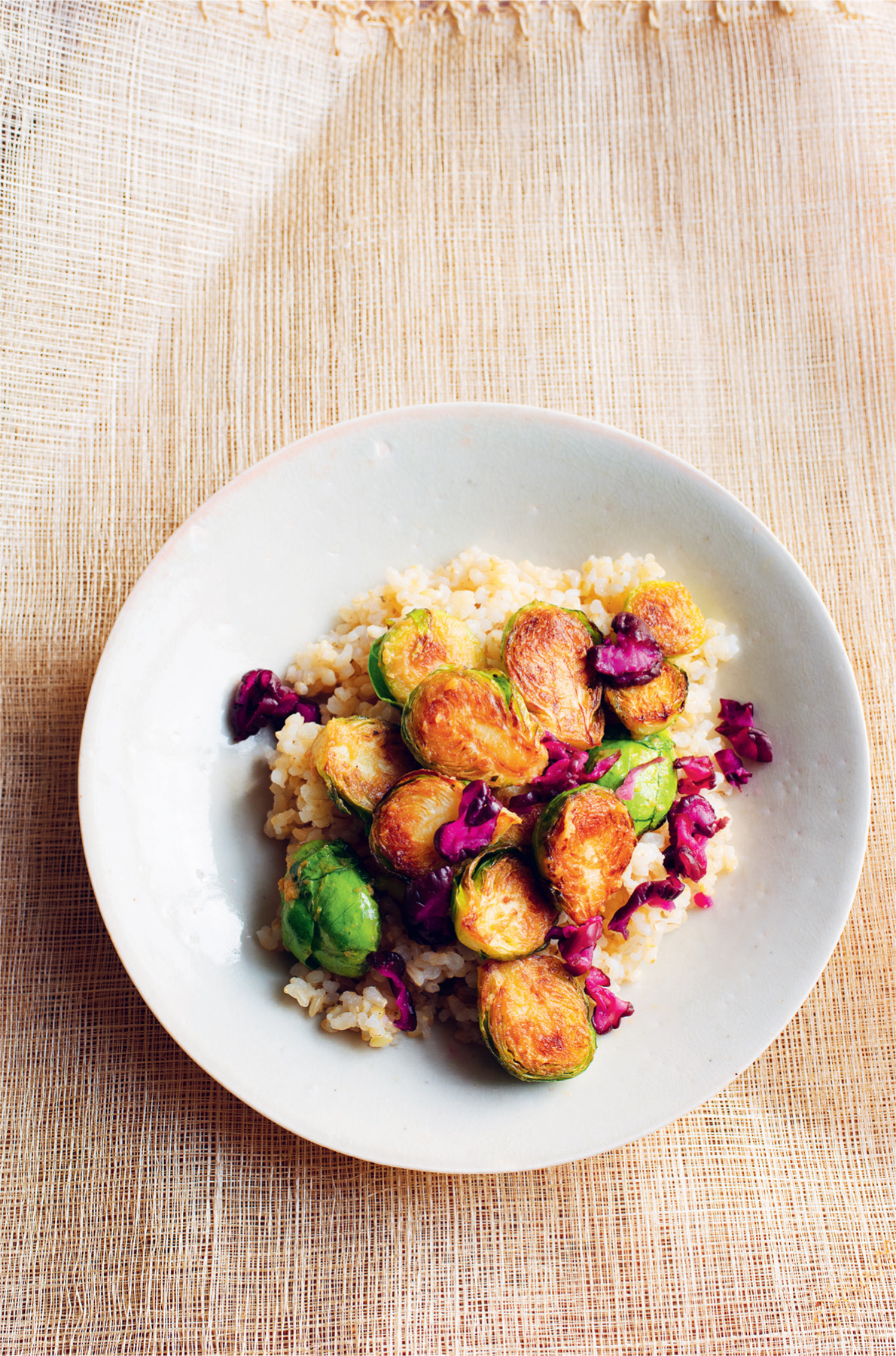
BRUSSELS SPROUTS, BROWN RICE, MISO
The savour of miso. The homeliness of brown rice.
Serves 2–3
brown sushi rice 190g
Brussels sprouts 750g
groundnut oil 2 tablespoons
light miso paste 1 tablespoon
Japanese pickles (tsukemono) 2 tablespoons
Put the rice in a bowl, cover with warm water, then run your fingers through the grains. Drain, repeat, then tip into a saucepan, cover with 5cm of cold water and set aside for half an hour.
Wash and trim the sprouts, then cut each in half. Bring the soaked rice to the boil in its soaking water, add half a teaspoon of salt, cover and lower the heat so the water simmers. Leave for thirty minutes or until the rice is approaching tenderness. Remove the pan from the heat and leave to rest for ten minutes before removing the lid.
Warm the oil in a shallow pan. Toss the sprouts with the miso paste, then transfer to the hot oil, moving them round the pan as they become crisp and pale golden brown.
Remove the lid from the rice, run a fork through the grains to separate them, then divide between two or three bowls. Spoon the miso sprouts into the rice and add some of the Japanese pickles.
• Fried in a little oil, the miso paste forms a fine crust on the outside of the sprouts. Serve them as an accompaniment if you wish, but I like them as the star of the show, tucked into a bowl of sticky rice and scattered with salty Japanese pickles. I serve this as it is, but also as a side dish for slices of cold roast pork and its crackling. This is sticky rice, my favourite, but you don’t want it in lumps, so running the tines of a fork through the cooked grain is a good idea.
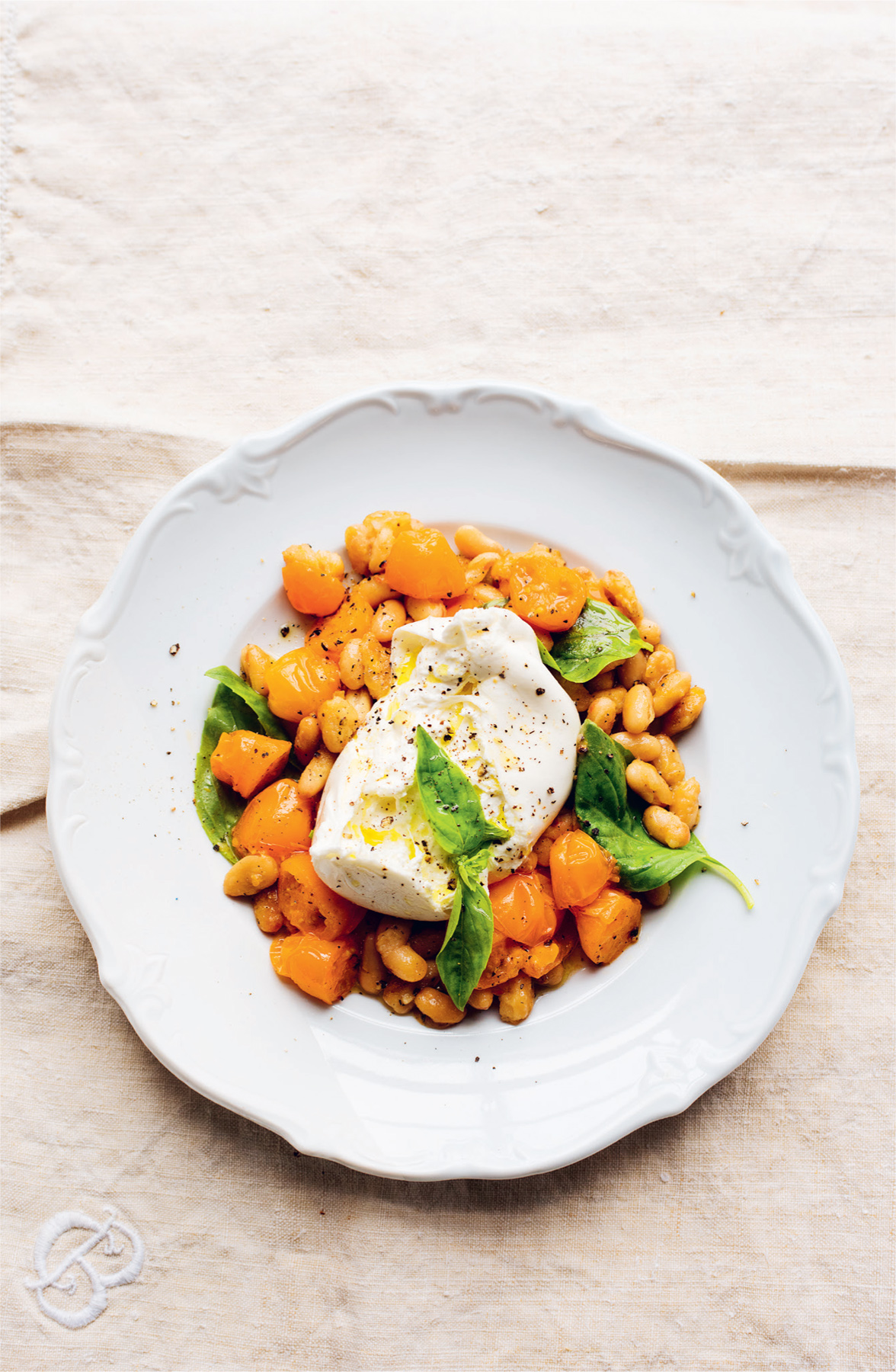
BURRATA, BEANS, TOMATOES
Milky snow-white cheese. Toasted beans. Peppery basil.
Serves 2
garlic 3 cloves
olive oil
cannellini beans 1 × 400g can
cherry tomatoes 250g
basil leaves a handful
burrata 2 × 250g balls
Flatten the garlic cloves with the blade of a kitchen knife, then peel away the skins. Warm four tablespoons of olive oil in a shallow pan and add the garlic, letting it cook briefly over a moderate heat. Drain the cannellini beans.
Cut the tomatoes in half, pour a little more oil into the pan, then add the tomatoes and the drained cannellini. Fry briefly, for four or five minutes, until the beans are starting to crisp a little.
Tear the basil leaves and add to the beans, stirring them in gently, until they start to wilt. Divide the beans and tomatoes between two plates, add the burrata and trickle with olive oil.
• The beans will crisp deliciously around the edges if you leave them to fry in the hot oil. Stirring them too often will cause them to break up as they develop their golden shell.
• Cannellini beans are my first choice here, but butter beans are worth considering too. Green flageolet don’t seem to work quite as well, though I am not entirely sure why.
• This is one of the lighter recipes in this volume, yet each time I make it, I am surprised by how satisfying it is.
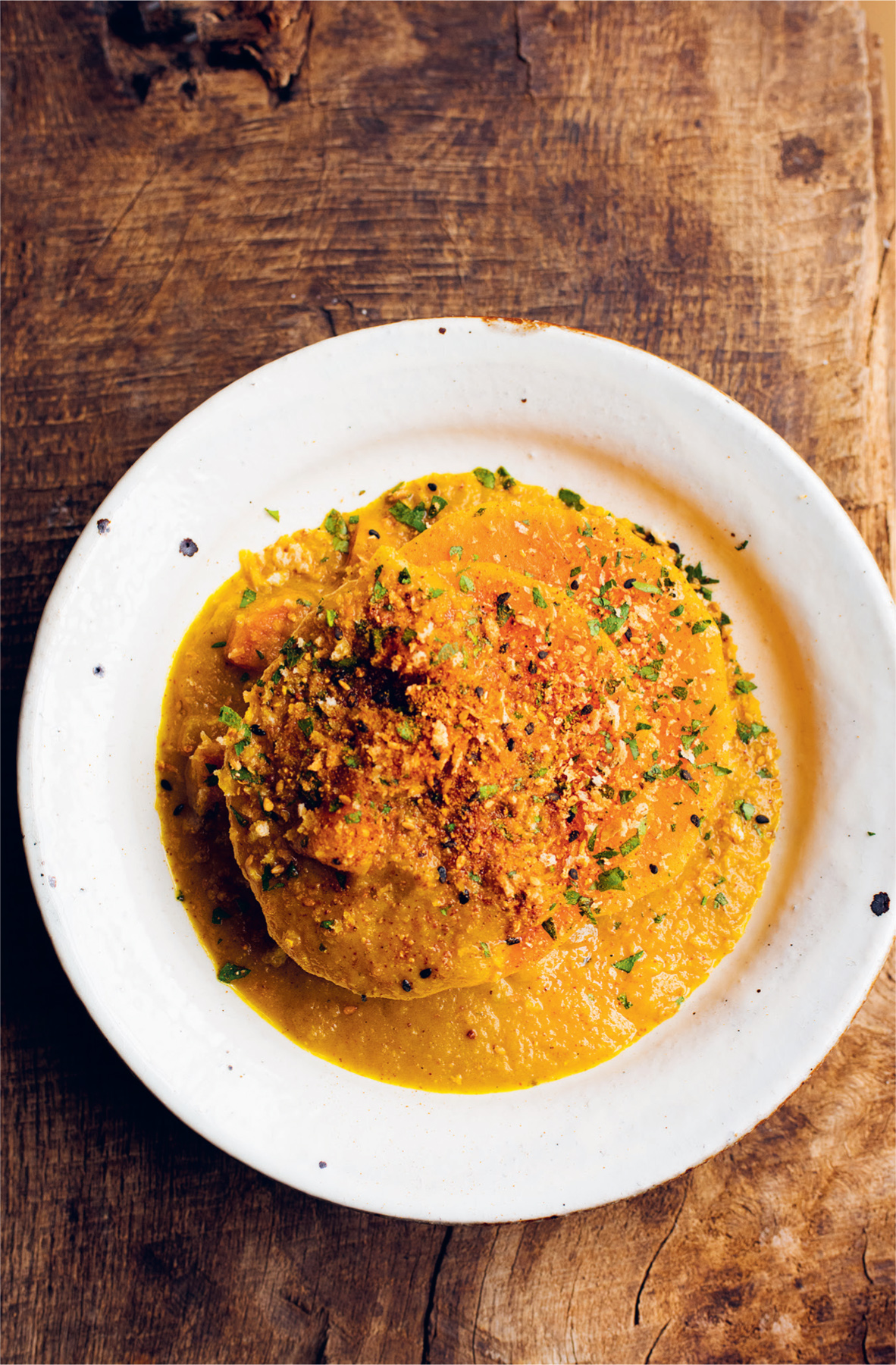
BUTTERNUT, BREADCRUMBS, CURRY POWDER
Sweet golden squash. Warm, spicy curry. Crisp crumbs.
Serves 2
onions, medium 2
carrots, large 300g
groundnut oil 3 tablespoons
butternut squash 500g
curry powder 2 teaspoons
ground turmeric 1 teaspoon
vegetable stock 500ml
panko breadcrumbs 6 tablespoons
parsley, chopped 4 tablespoons
togarashi 1–2 teaspoons
Peel and roughly chop the onions and carrots, then put them in a large saucepan with the oil and place over a moderate heat. Let the vegetables cook for ten to fifteen minutes until the onions are pale gold.
Slice the butternut into 2cm-thick rounds, deseed and peel it if you wish. When the onions are nicely golden, stir in the curry powder, ground turmeric and a little salt and fry briefly, then pour in the vegetable stock and bring to the boil. Tuck in the slices of squash and lower the heat to a simmer. Leave for fifteen minutes, then remove the squash and place half of the sauce in a blender. Process to a smooth purée, then return to the pan and keep at a low bubble for five minutes.
Toast the panko crumbs in a dry pan till golden, then toss with the chopped parsley and togarashi. Slide the squash back into the sauce for a couple of minutes, sprinkle with the parsley crumbs, then serve.
• The sauce is based on a classic katsu, which flatters the sweetness of the butternut. You can turn up the heat if you wish with a little more togarashi seasoning or even a splash of chilli sauce.
• The warmly spiced sauce is also worth trying with baked aubergine or roasted parsnips.
• Togarashi, the Japanese spice mix, can be found in major supermarkets, Japanese food shops and online.
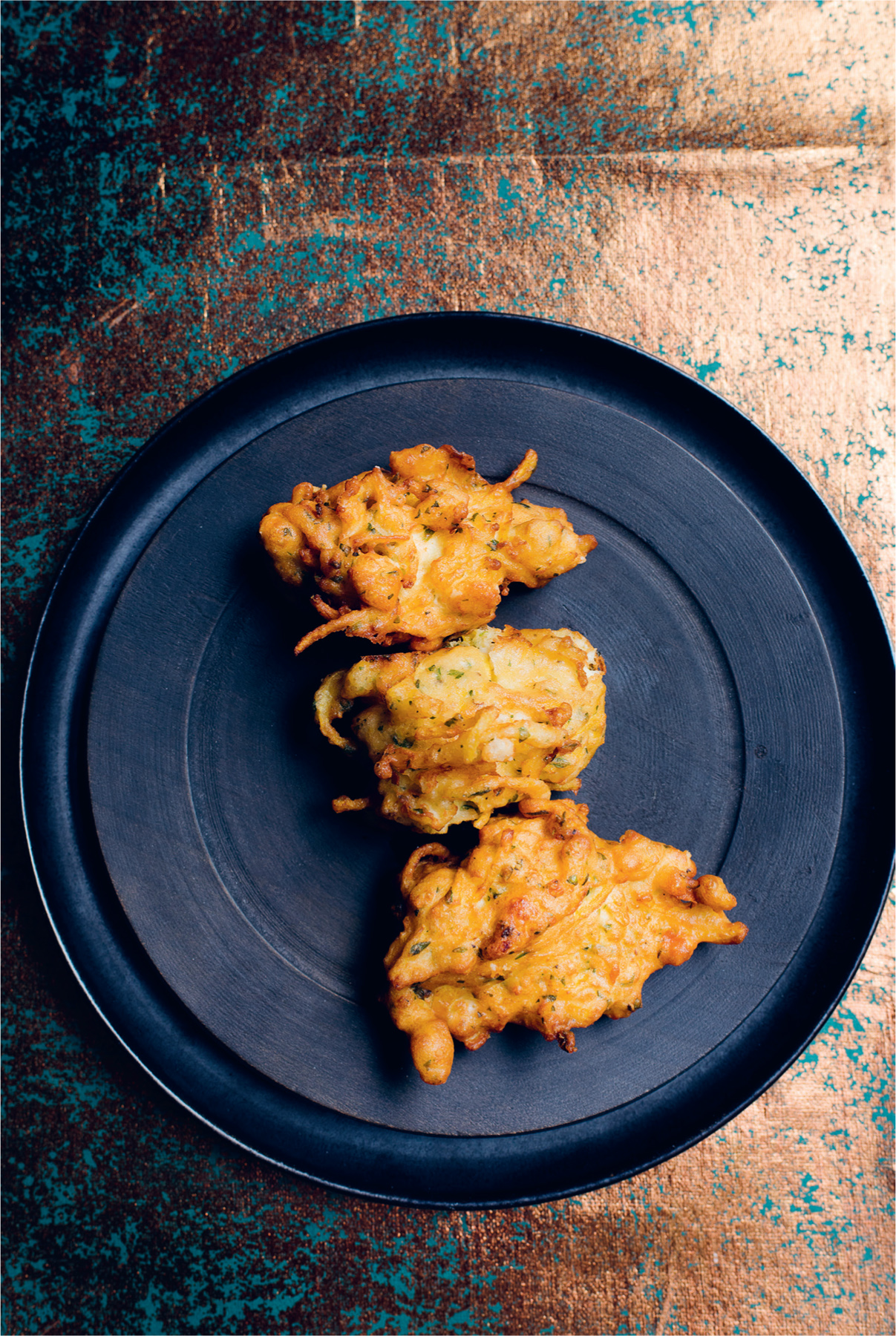
BUTTERNUT, FETA, EGGS
Crisp, light, sweet, salty.
Makes 9 fritters. Serves 3
butternut squash 300g
garlic 2 cloves
groundnut oil
eggs 2
feta cheese 200g
plain flour 4 tablespoons
thyme leaves, chopped 1 tablespoon
parsley, chopped 3 heaped tablespoons
groundnut or vegetable oil, for deep frying
Peel and remove the seeds from the butternut squash. Push the squash through a spiraliser to give long, thin strings.
Peel the garlic and thinly slice it. Warm a little groundnut oil in a large, shallow pan, then add the garlic, let it sizzle for a couple of minutes then, as it starts to colour, drop in the squash and fry for five or six minutes till the colours are bright and the squash is tender but far from falling apart.
Separate the eggs. Make a batter by mixing together the egg yolks, crumbled feta cheese, plain flour, a grinding of black pepper and the chopped thyme leaves and parsley. Beat the egg whites till frothy, then fold into the batter. Toss the threads of butternut with the batter.
Warm enough groundnut oil in a deep, heavy pan to fry the fritters. When the oil is at 180°C, take a large spoonful of the batter-coated butternut and lower into the hot oil. Repeat with a further three or four, frying for three or four minutes till crisp and golden in colour. As each fritter is ready, remove with a draining spoon and rest on kitchen paper. Continue with spoonfuls of the batter until you have nine fritters. Serve hot.
• So good are these little fritters that I have tried them with other vegetables too, including shredded courgette (a success) and beetroot (less so). It is worth having something to dip them into, such as a cucumber, mint and yoghurt dip or a bowl of especially creamy hummus.
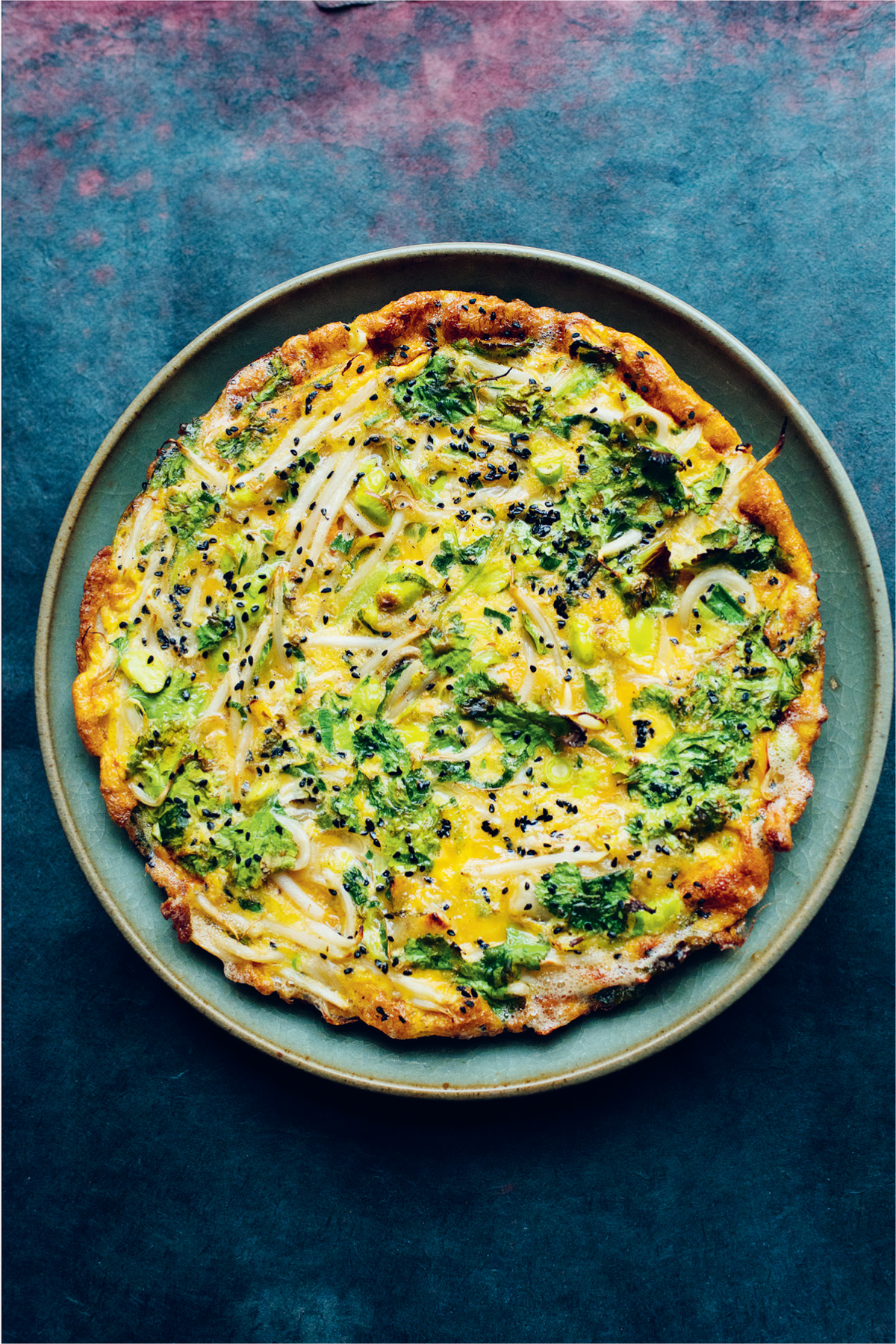
EGGS, EDAMAME, BEAN SPROUTS
A soft pillow of egg. A tangle of vegetables.
Serves 2
edamame beans, podded 200g
spring onions 8
pak choi 200g
garlic 3 cloves
large green chillies 2
groundnut oil 4 tablespoons
bean sprouts 200g
eggs 6
nigella seeds 2 teaspoons
coriander a handful
Bring a pan of water to the boil, add the edamame and boil till tender – about eight minutes. Drain and refresh in a bowl of iced water.
Finely chop the spring onions, discarding the roots and any tough dark green leaves. Shred the pak choi. Peel and thinly slice the garlic. Finely slice the chillies.
Warm half the groundnut oil in a large, shallow pan, fry the spring onions, garlic and chillies till soft, then add the shredded pak choi and lastly the bean sprouts, tossing them in the hot oil and cooking for three or four minutes till softened.
Break the eggs into a bowl and beat them lightly with a fork. Add the cooked and drained edamame, the fried vegetables and aromatics. Season with a little sea salt and black pepper and fold in the nigella seeds and coriander.
Warm the remaining oil in a large metal-handled frying pan, pour in the omelette mixture and fry over a moderate heat for about eight minutes, until the edges have set and the middle is still almost liquid. Heat the oven grill. Place the frying pan under the grill and continue cooking for two or three minutes until the centre of the omelette is lightly set. (Ideally, it should be a little baveuse, verging on the point of setting.) Cut in half and serve.
• To the basic mixture you can add pretty much any vegetable you have to hand, from fried mushrooms to steamed shredded cabbage. The cooking time is brief, so most vegetables will have to be lightly cooked first. Brassicas such as long-stemmed sprouting broccoli work very well, as do any late autumn beans. I especially like steamed mustard greens.
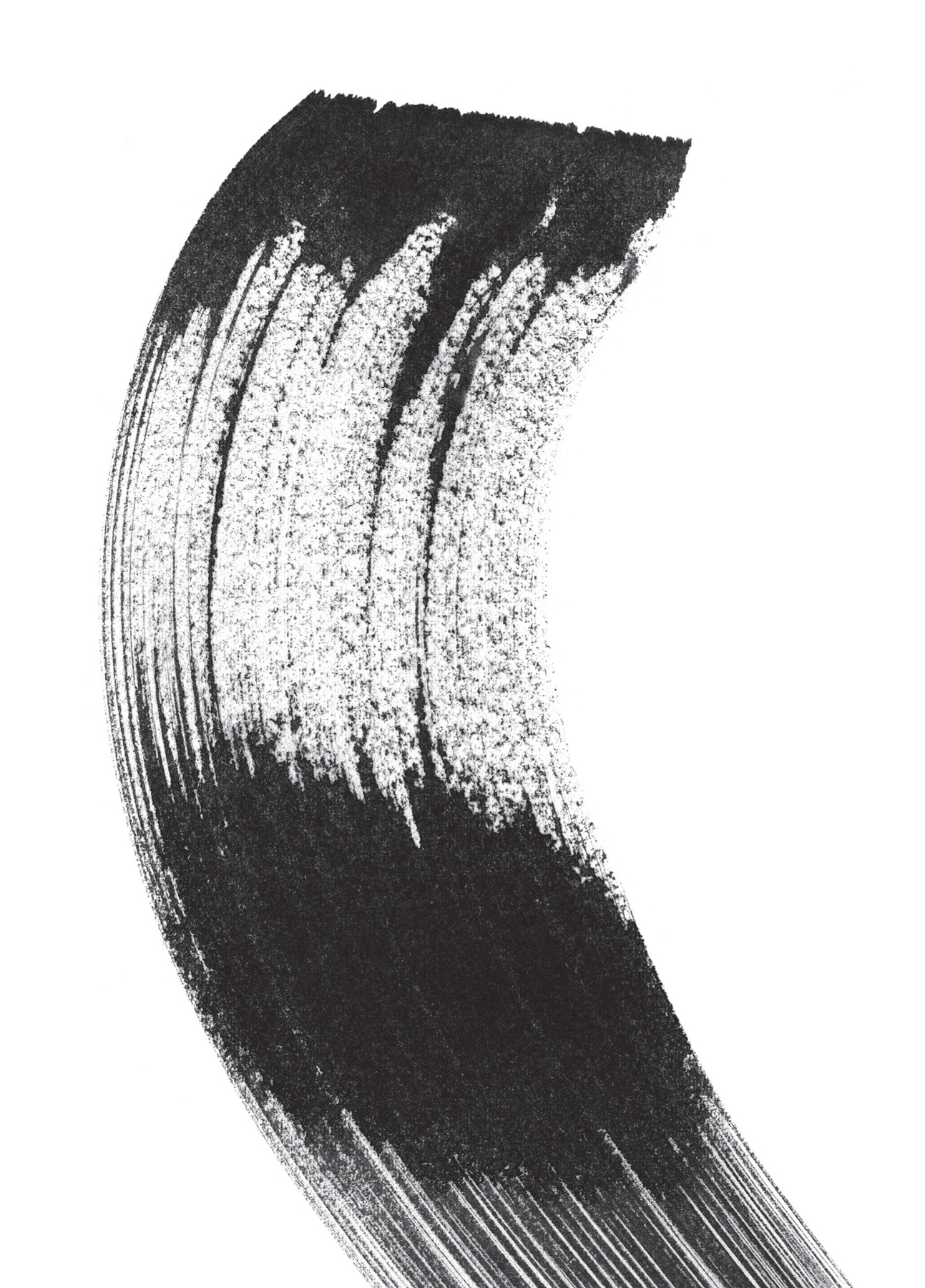
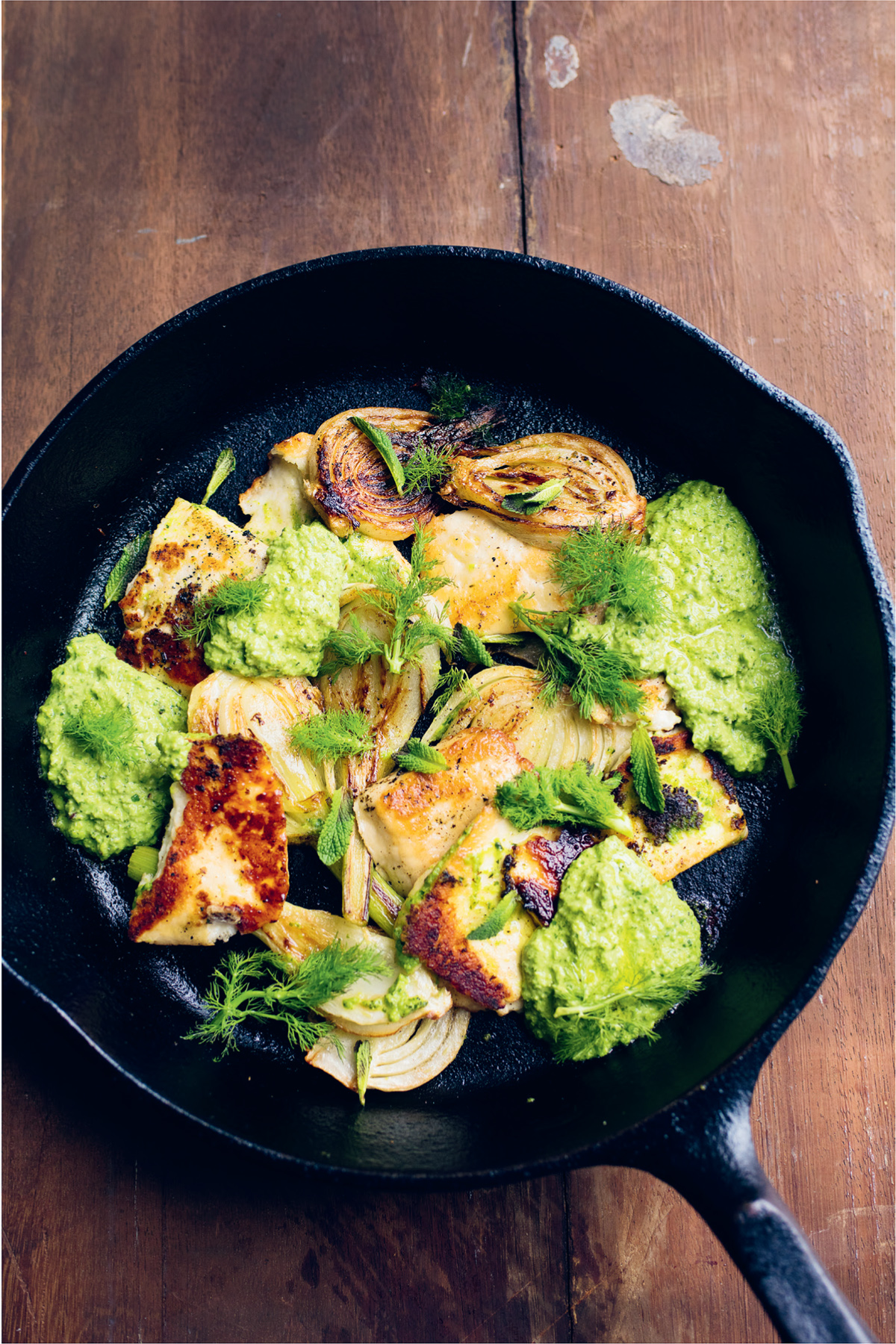
FENNEL, PEAS, HALLOUMI
Fresh green flavours for a golden autumn day.
Serves 2
fennel 300g
olive oil 3 tablespoons
halloumi 250g
For the dressing:
frozen peas 250g
basil leaves 30g
mint leaves 20g
olive oil 150ml
Trim and thinly slice the fennel, no thicker than a pound coin. Warm the 3 tablespoons of oil in your largest frying pan, place the fennel in the pan in a single layer, then season lightly and cook until the fennel is light gold on the underside. Turn each piece over and continue cooking until soft and translucent.
Slice the halloumi into pieces slightly thicker than the fennel and place them in the pan, tucking them in wherever there is a gap, overlapping where there isn’t. Let the cheese toast and turn patchily gold.
Put the frozen peas in a colander and run them under the cold tap for a few minutes till they have defrosted. Let them drain. Whizz the peas, basil and mint leaves and the oil in a food processor till almost smooth – a slightly rough texture is good – then spoon over the cheese and fennel and serve. If you have a few fennel fronds, add them at the very end.
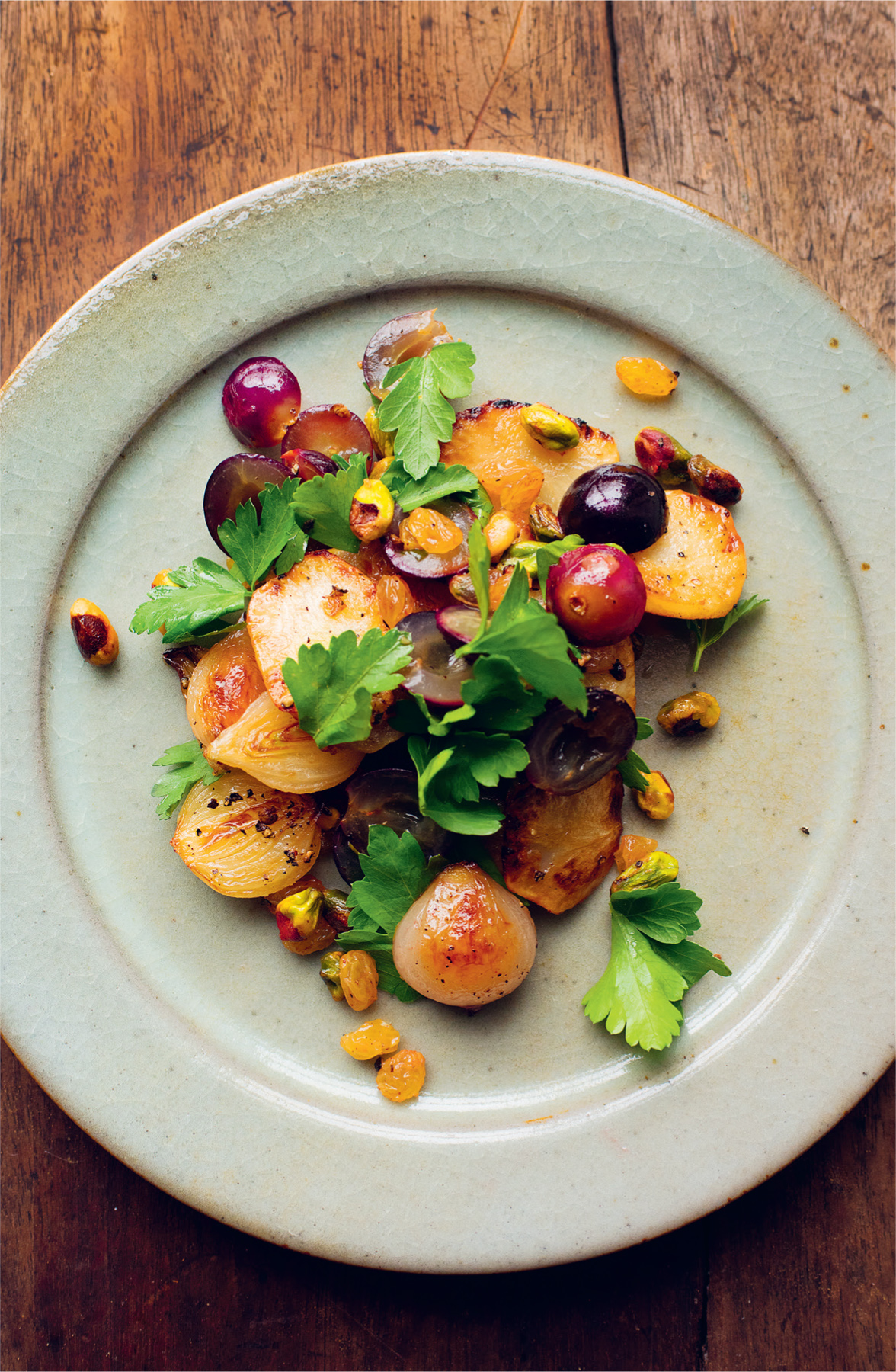
JERUSALEM ARTICHOKES, PISTACHIOS, GRAPES
Golden carbs. Black grapes.
Serves 2–3
a lemon
Jerusalem artichokes 200g
shallots, small 6
black grapes 150g
olive oil 3 tablespoons
golden sultanas 4 tablespoons
shelled pistachios 4 tablespoons
parsley leaves a handful
Halve the lemon and squeeze the juice into a bowl. Peel the Jerusalem artichokes, then cut into rounds approximately 0.5cm thick. Put the artichokes into the bowl with the lemon juice and toss together. This will prevent them going brown.
Peel the shallots and cut them in half from stem to root. Halve and deseed the grapes. Warm the olive oil in your largest shallow pan. Add the artichokes and shallots to the hot oil, turning them over when their underside is golden and they are starting to soften.
As the artichokes become tender, add the grapes and sultanas and lastly, the pistachios and parsley.
• Small potatoes can successfully replace the artichokes. You could also use parsnips. I find it best to use parsnips that have been steamed for ten minutes before frying. They are more tender that way.
• Should you find it easier, you can roast the artichokes instead of frying them, adding the remaining ingredients to the pan once the artichokes are golden.
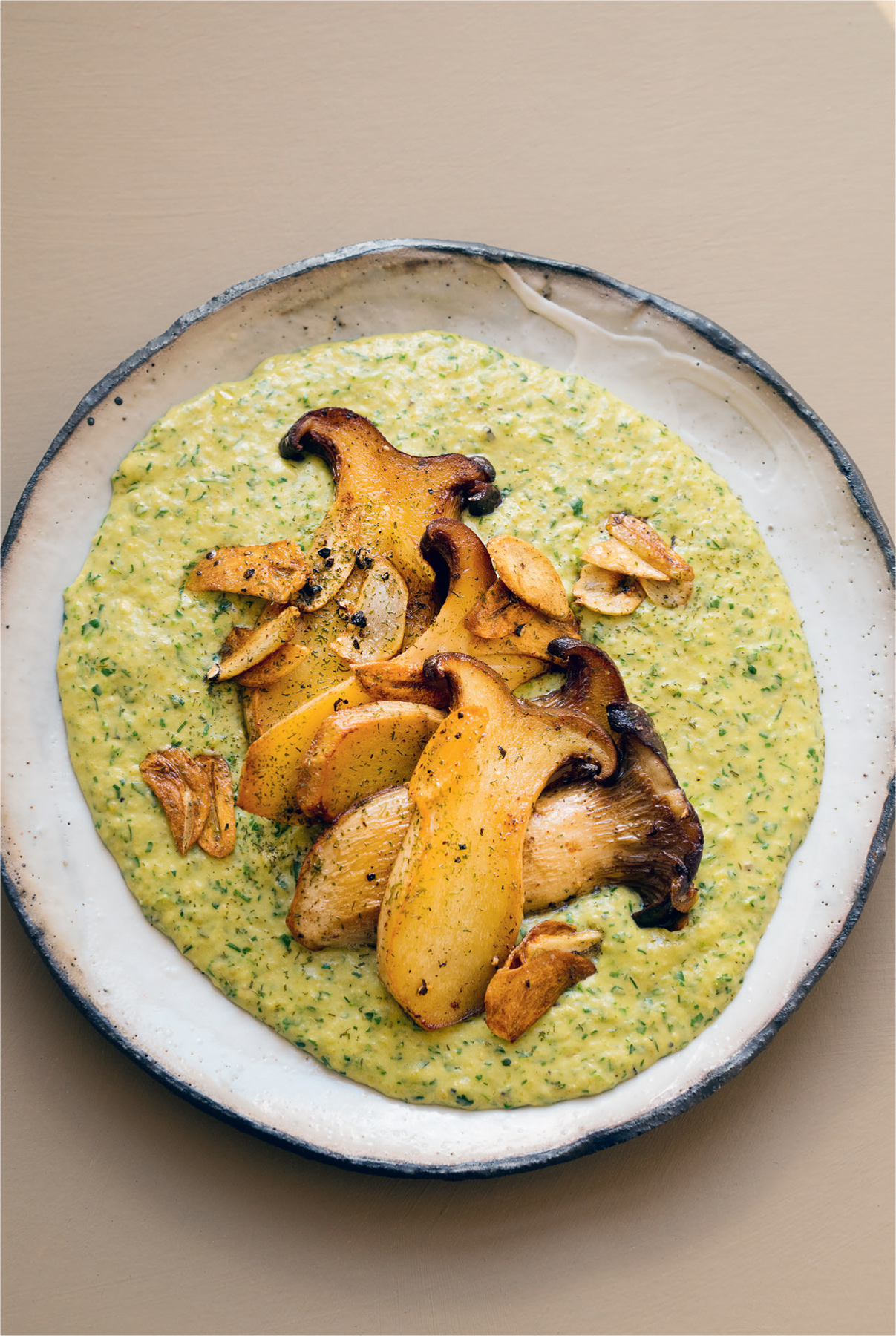
MUSHROOMS, HUMMUS, HERBS
Creamed chickpeas. Sizzling mushrooms.
Serves 2
double cream 250ml
chickpeas 1 × 400g can
coriander leaves and stems 10g
dill 15g
parsley 10g
king oyster mushrooms 400g
olive oil 4 tablespoons
butter 30g
garlic 4 cloves
Warm the cream and drained chickpeas in a medium-sized saucepan for five minutes over a moderate heat. Tip them into a blender or food processor with the coriander, dill and parsley and process to a thick cream. Transfer back to the saucepan and season.
Slice the mushrooms into 1cm-thick pieces. Warm the olive oil and butter in a shallow pan, add the slices of mushroom and cook till golden on both sides. You may need to add a little more oil. As each mushroom browns, remove to a plate or piece of kitchen paper.
Peel and thinly slice the garlic, cook briefly in the pan until it turns gold, then return all the mushrooms to the pan. Warm the hummus, spoon onto plates, then add the sizzling mushrooms and garlic.
• Mushrooms, fried with butter and garlic, are just one possibility here; the soft, herb-speckled purée lends itself to sitting under deep-fried artichokes or roast parsnips, baked tomatoes or wedges of baked cabbage.
• Such purées can be made and kept in a small bowl overnight in the fridge, their surface splashed with olive oil and tightly covered. Stored like this, their texture will thicken and they can be spread on slices of hot toast for a quick bite to eat when you arrive home, hungry.
PARSLEY, PARMESAN, EGGS
Warm, soft, parsley-freckled drop scones. (Picture overleaf.)
Makes 6
parsley leaves 15g
self-raising flour 180g
baking powder 1 teaspoon
a large egg
milk 220ml
Parmesan, grated 5 heaped tablespoons
butter a little
Roughly chop the parsley leaves. Put the flour in a large mixing bowl, add the baking powder and combine. (You can sieve the two together if you wish.) Break the egg into a bowl and beat lightly with a fork to combine white and yolk, mix in the milk, then stir into the flour.
Add the grated Parmesan and chopped parsley to the batter. Melt the butter in a small saucepan, then remove from the heat. In a medium, non-stick or well-used frying pan, pour a couple of tablespoons of the melted butter and let it warm over a moderate heat. Pour in a sixth of the batter, making a round approximately the size of a digestive biscuit. Repeat with two more, then let them cook for four or five minutes, checking the underside regularly for colour.
When they are puffed and golden, use a palette knife to carefully turn each one over. Leave for a further three or four minutes, then lift out and keep warm. A sound test for doneness is to touch the centre of each scone with your finger. It should feel lightly springy. Continue with the remaining batter. Serve with the pumpkin hash overleaf.
• The drop scones can be flavoured with chopped thyme or rosemary, basil or tarragon. In which case I would serve them with grilled tomatoes, lightly crushed with a fork, or chopped spinach softened with a little cream.
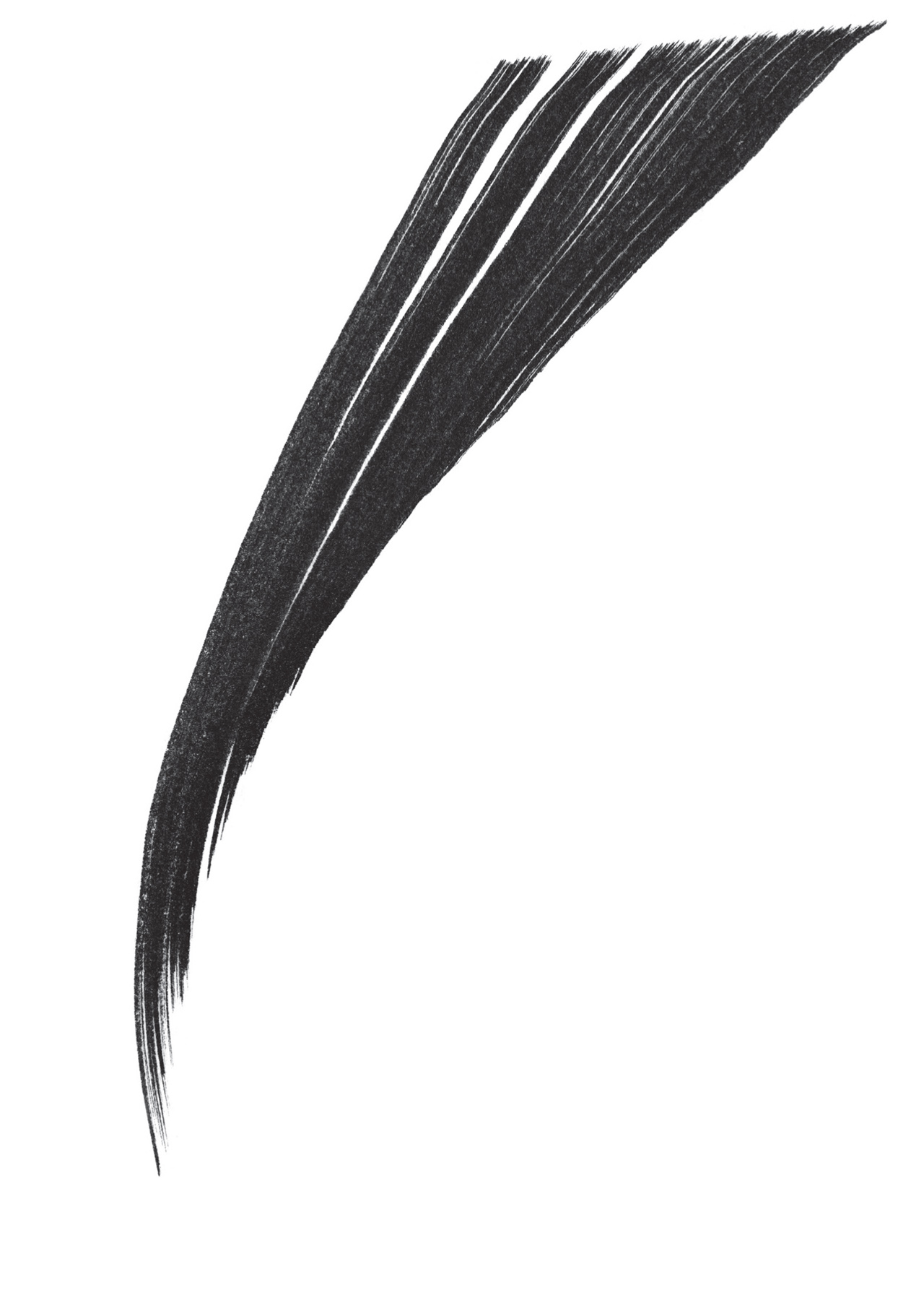
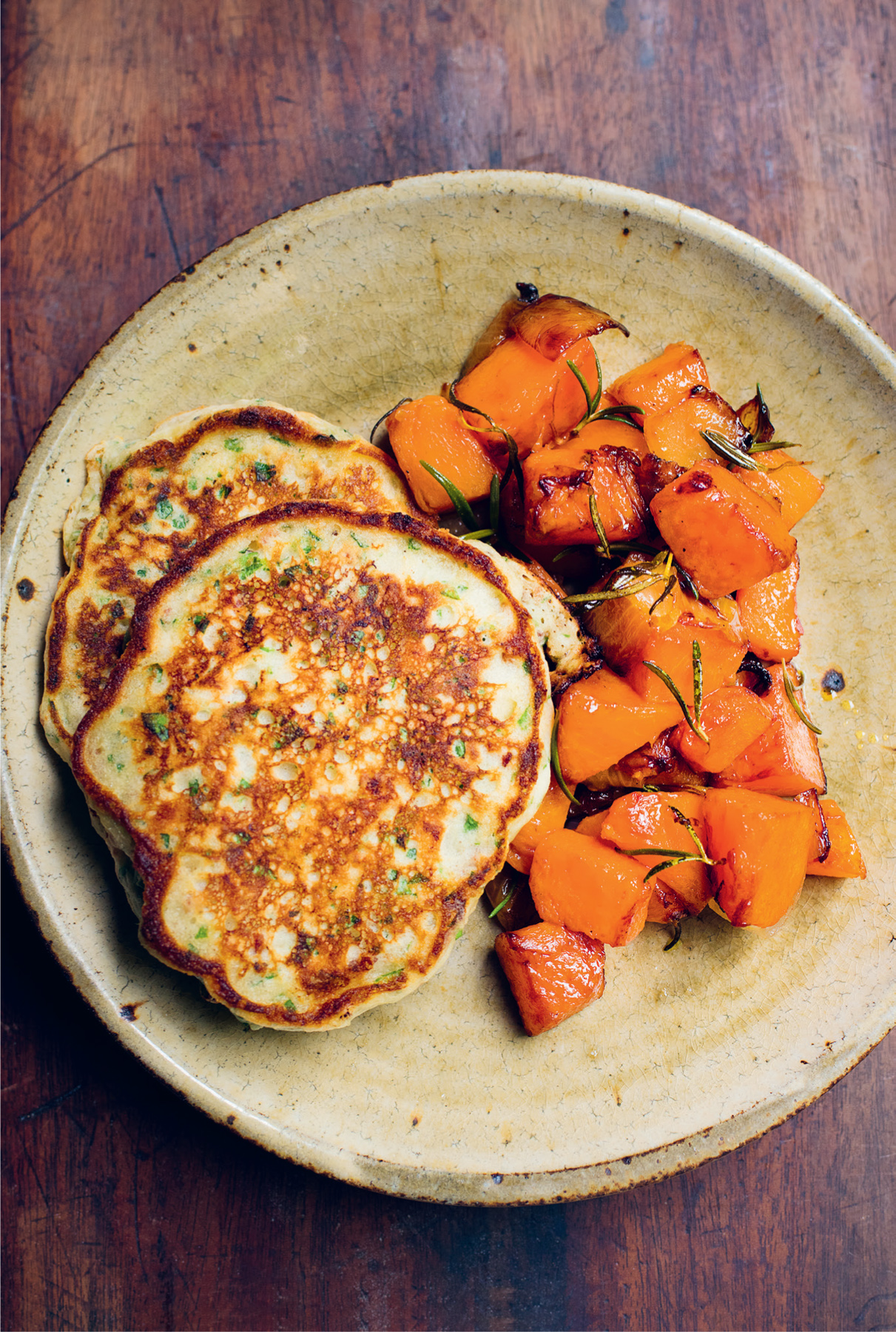
PUMPKIN, ONIONS, ROSEMARY
Sweet and sticky squash.
Enough for 6
pumpkin or butternut squash 700g
onions, medium 2
butter 30g
olive oil 2 tablespoons
rosemary 3 sprigs
Peel the pumpkin and cut the flesh into cubes roughly 3 x 3cm. Peel and roughly chop the onions. Warm the butter and olive oil in a large, shallow pan, add the pumpkin and onions and let them cook, with a regular stir, for about ten minutes. Finely chop the rosemary leaves, discarding the stalks, add to the pan with a little sea salt and coarsely ground black pepper, then cover with a lid and leave to cook over a low to moderate heat for about fifteen minutes.
Check the onion and pumpkin occasionally to make sure they aren’t browning too much. They are done when soft and easily crushed between your fingers. Serve with the drop scones on the previous page.
• As well as a side dish for the drop scones this can be used as the stuffing for an omelette or frittata, or served as a vegetable dish piled onto steamed rice.
• Use the recipe above with courgettes instead of pumpkin.
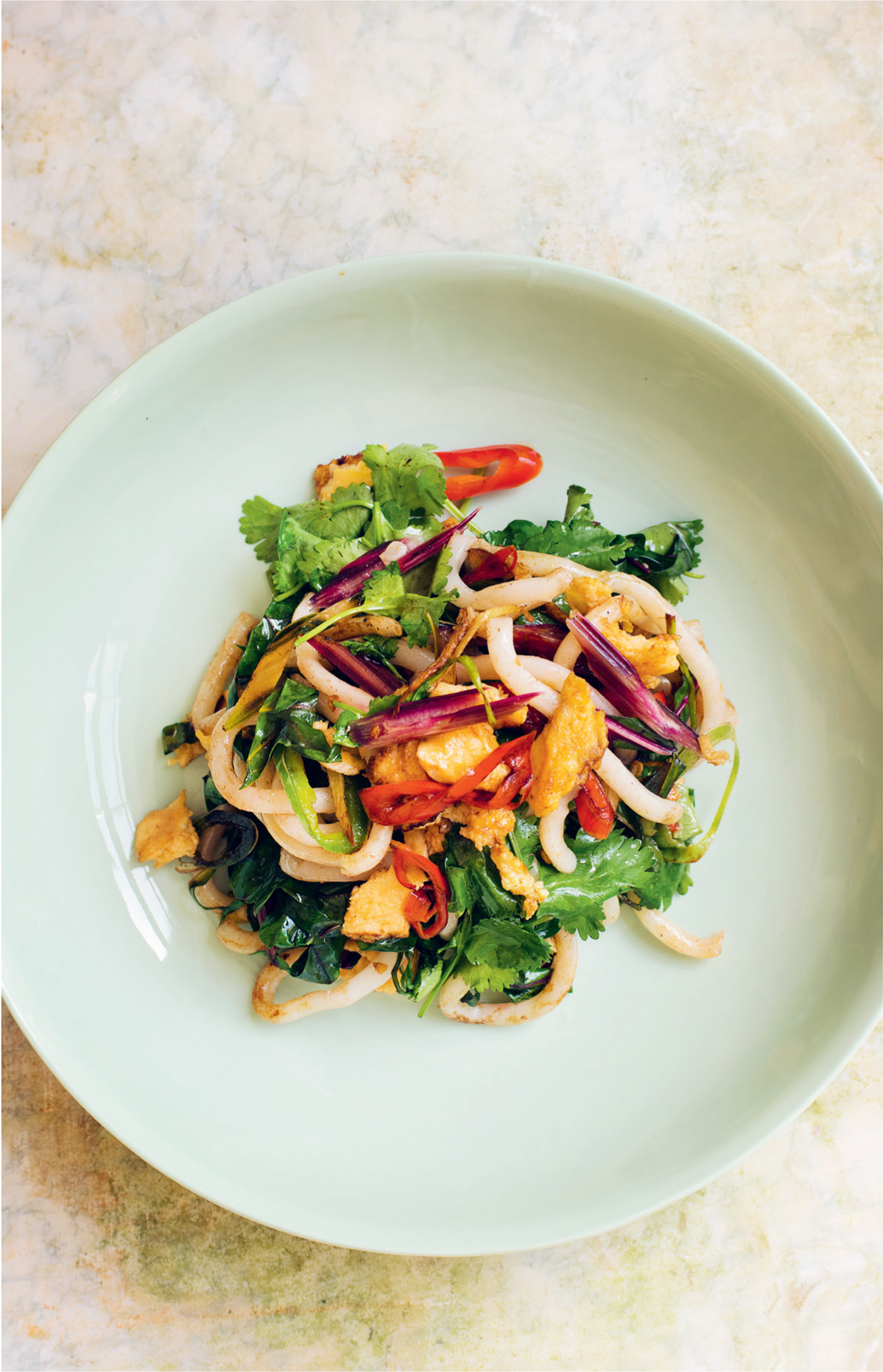
RAINBOW CHARD, EGG, NOODLES
A joyful tangle of noodles and greens.
Serves 2
a red chilli, medium
a green chilli, medium
a bunch of coriander 25g
garlic 1 clove
ginger a 15g piece
rainbow chard 100g
eggs 3
groundnut oil 5 tablespoons
fresh udon noodles
soy sauce to taste
sesame oil a dash
Thinly slice the chillies. Cut the coriander stems into small pieces the length of a matchstick and reserve the leaves. Peel and thinly slice the garlic. Peel the ginger, then cut into skinny matchsticks. Remove the leaves from the chard and roughly shred them, then chop the stems into short pieces.
Break the eggs into a small bowl and beat them. Warm half the oil in a large, shallow pan over a moderate heat, pour in the beaten egg and leave to set, checking the underside after a minute or two. When the omelette is golden, flip over and let the other side cook for a minute or two, then remove from the pan and tear the omelette into small pieces.









